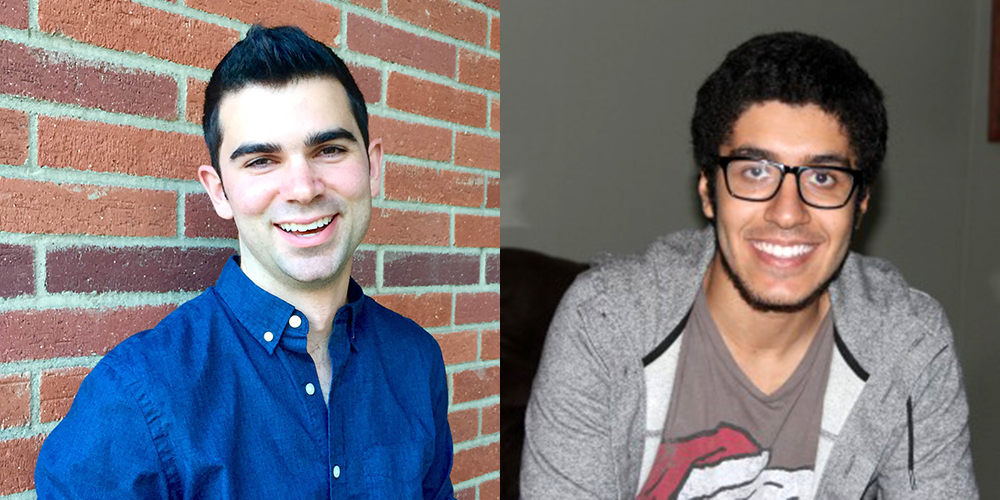Kyrollos Yanny and Calvin Brown from the Ozcan Research Group received NSF fellowship for their research proposals on imaging technology.

Among the four UCLA Engineering students who have received the NSF (National Science Foundation) Graduate Research Fellowship this year, two are currently working in Professor Aydogan Ozcan’s nano-biophotonics research group.
“What our lab does, is devising very cost-effective, fast, and portable imaging,” said first-year graduate student Calvin Brown. “You can find all kinds of applications outside the lab.”
Brown recently graduated from UC Berkeley, where he majored in Engineering Physics. After talking to some senior engineers at R&D companies, Brown realized that to have a real influence in the direction of any projects, he needed more research experience in school and a PhD degree. Casting a wide net at various graduate programs, Brown said he decided UCLA was the best fit for him after a few interviews with Professor Ozcan that gave him a clear idea of what the lab does.
One of the factors that attracted him to UCLA was the interdepartmental collaborations.
“We are very fortunate to be across the street from the medical center,” Brown said. “We have some collaborations going on from time to time, with real doctors and real patients.”
Brown explained that there is also a software aspect to the lab’s medical projects. Coupled with the physical imaging device, apps made for cellphones can allow doctors and patients to get test results quickly, especially in places with limited resources.
“For some of our projects, you can send it to our servers here over wifi, or over the cellular network,” Brown said. “And we can use much more computing power than you have on your phone. We can do a bunch of the processing and send you back a result: what’s the concentration of the bacteria you were looking at? Or if it’s a diagnosis test, it’ll send back a yes or a no. The server’s powerful specifications enable much faster sample analysis than could be achieved by smartphones or even trained medical professionals.”
Brown’s research focus is 3D imaging, where he explores how a computer can sketch the 3D image of an object by putting together information from multiple pictures. This new path, according to Brown, can give scientists a lot of insight into how brains and muscles work. One can even observe the growth of a little worm to gain understanding of how it, humans, or even more complicated life forms develop, all using bio-imaging techniques.
Brown said he is thankful for the guidance of Professor Ozcan, the principal investigator, who has helped him see things differently.
Undergraduate senior Kyrollos Yanny is another recipient of the NSF Fellowship from Ozcan’s lab. Coming from the Bioengineering department, Yanny joined the EE lab almost two years ago. Working alongside two other undergraduate students, Yanny has been developing a platform for monitoring pathogens in water.
“We’re trying to get an automated platform that doesn’t have human interaction,” Yanny said. “Instead of having someone go to the water — whether it’s the ocean or the sea, or any drinking source — and manually get a sample and go to the lab and scan it, we’re trying to make a platform that will just sit there in the water, and do the work for us.”
According to Yanny, the project has many interdisciplinary aspects including circuits, device structure, optics, and coding. He mainly contributed to the designing of the circuits and the physical structure of the device.
“The idea that we’ll build a device that’ll be submersible, that we can put in the water. It can scan the water and we can tell what’s inside the water,” Yanny said. “That was mainly my drive to do the research.”
The NSF will support Yanny’s future graduate studies for three years, wherever he chooses to pursue his academic career. Yanny said he has now received offers from graduate programs at UC San Diego, Berkeley, Irvine, not to mention here at UCLA. Although he has yet to make a decision on his next step, Yanny said he likes to imagines himself continuing working in the same field — bio-imaging and devices.
